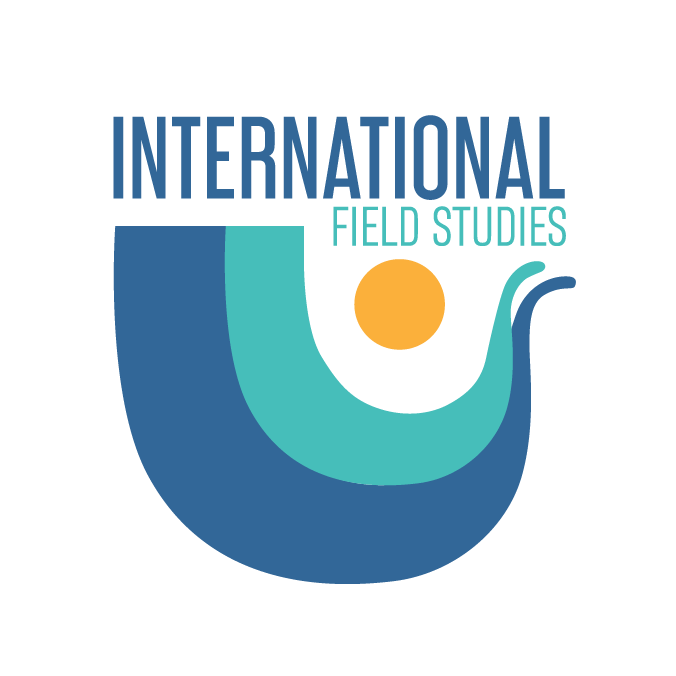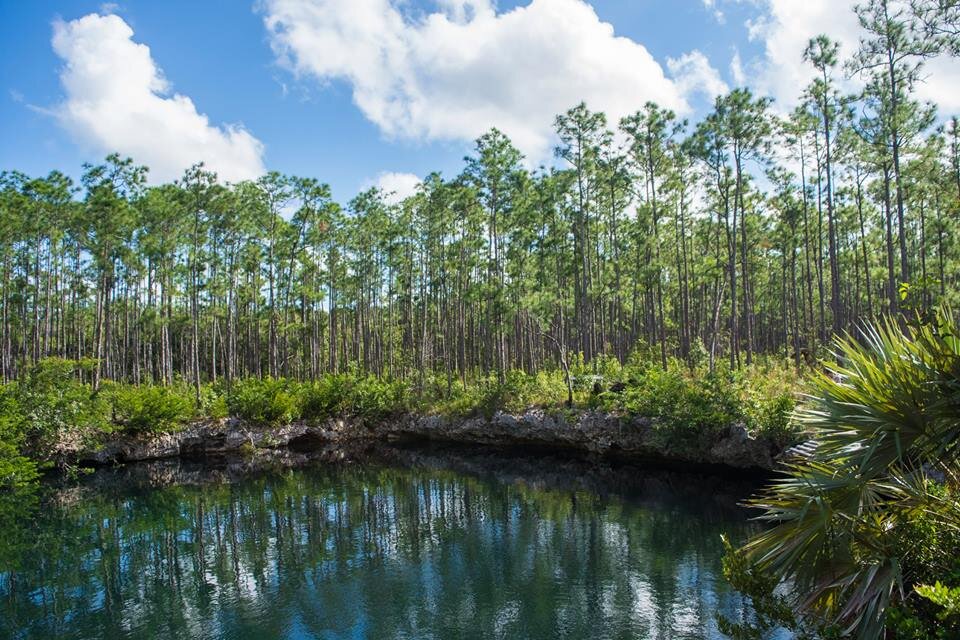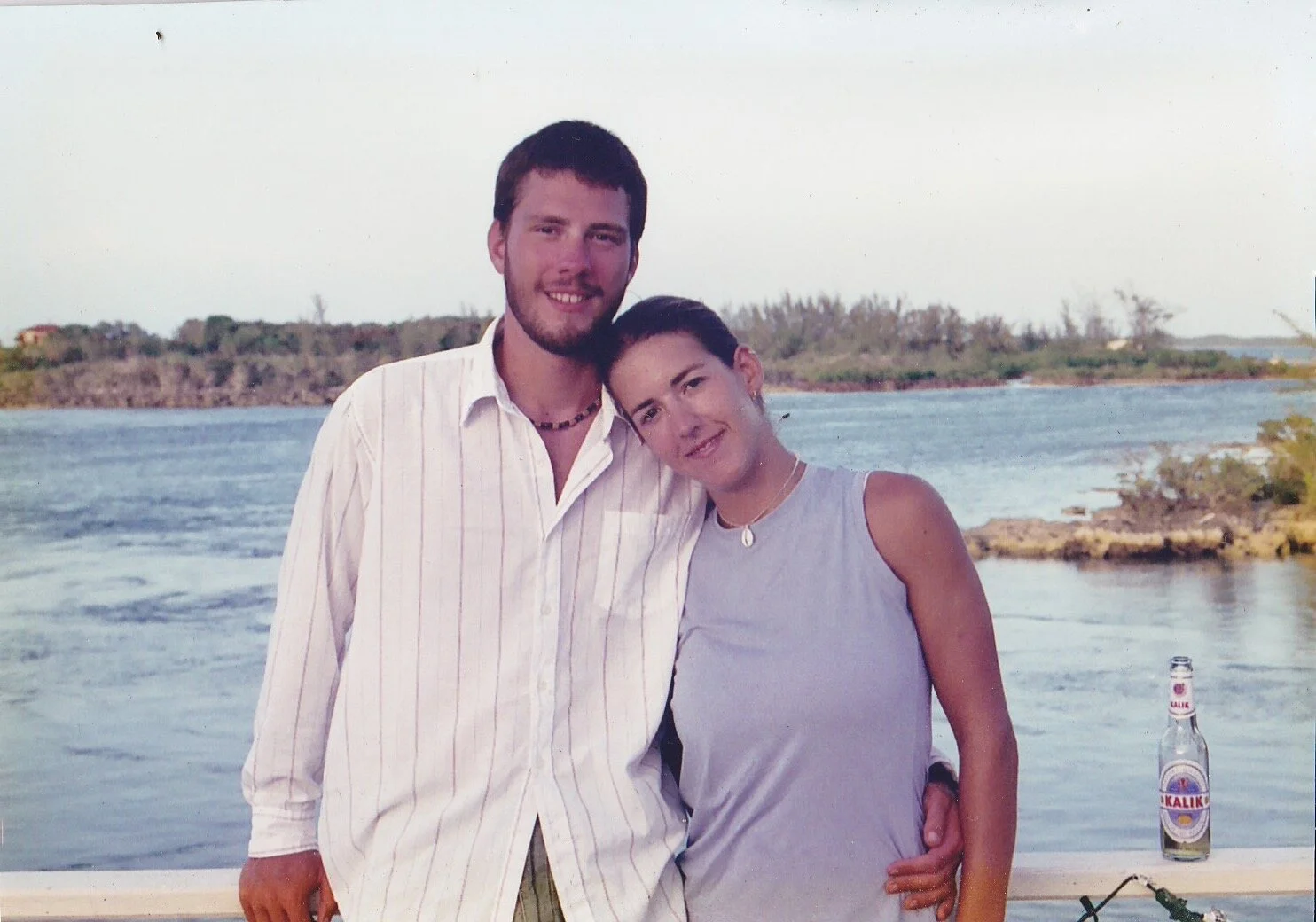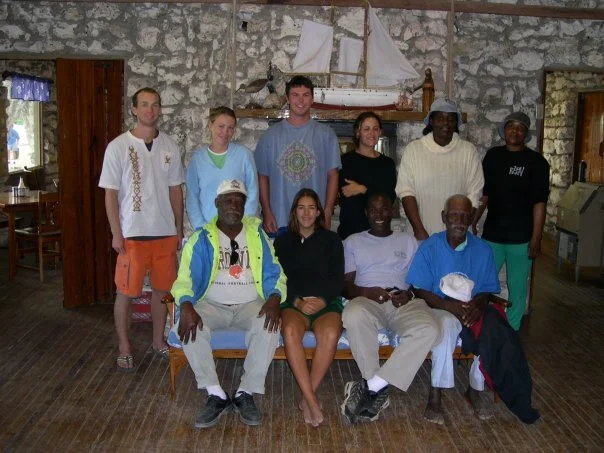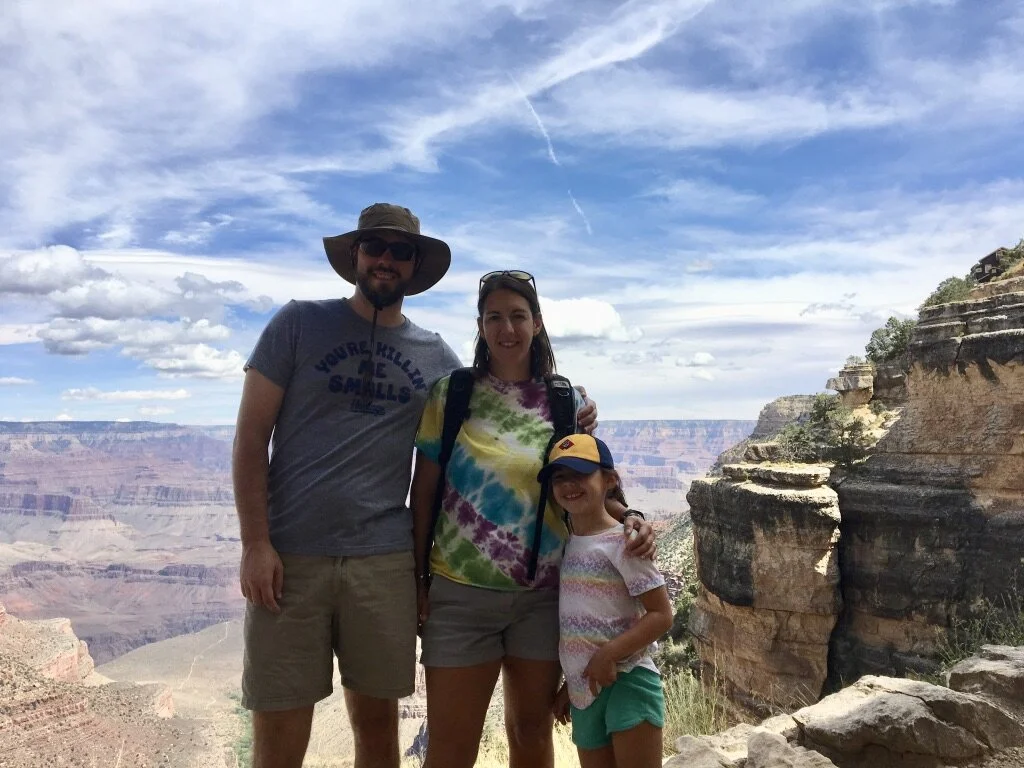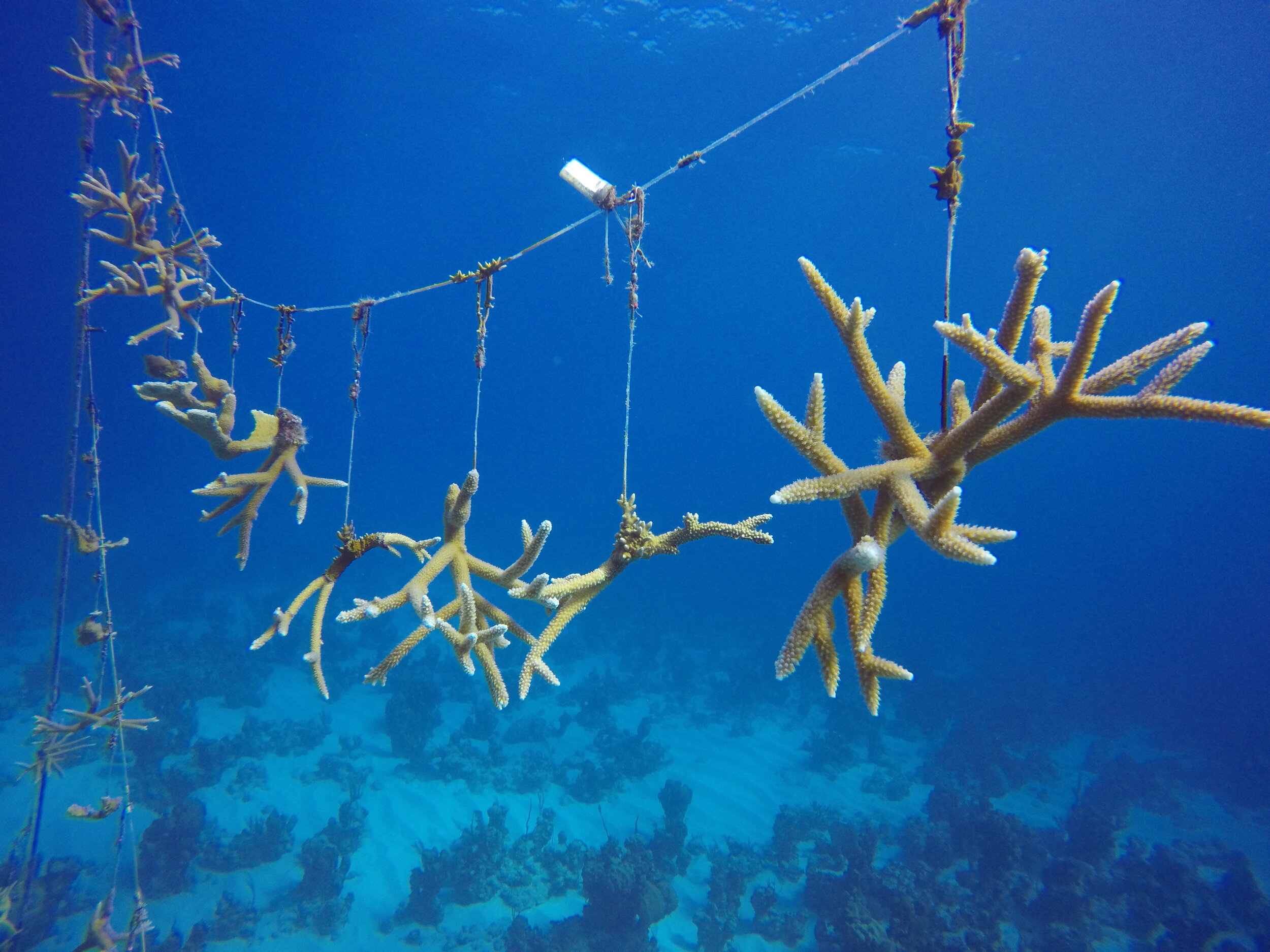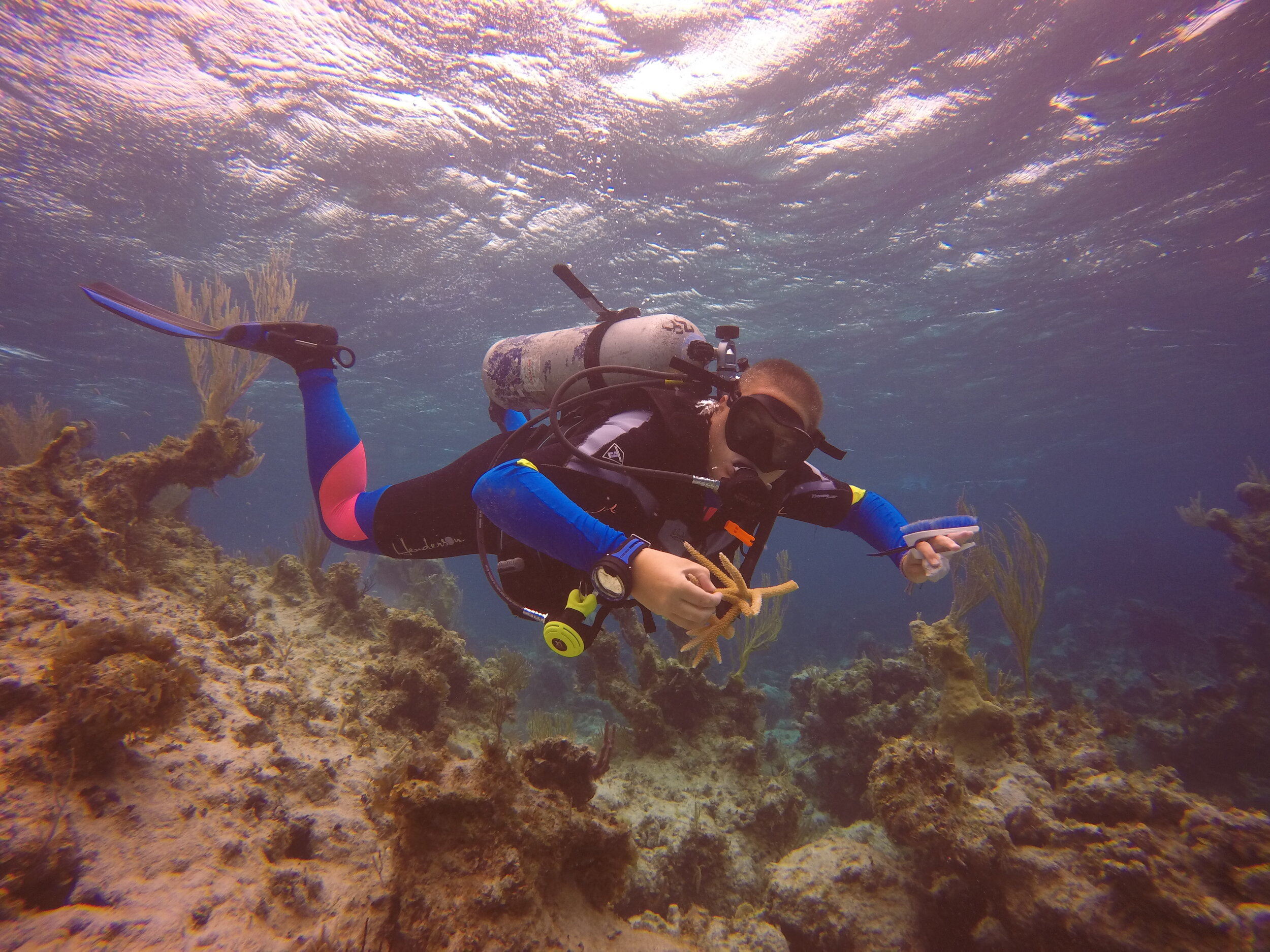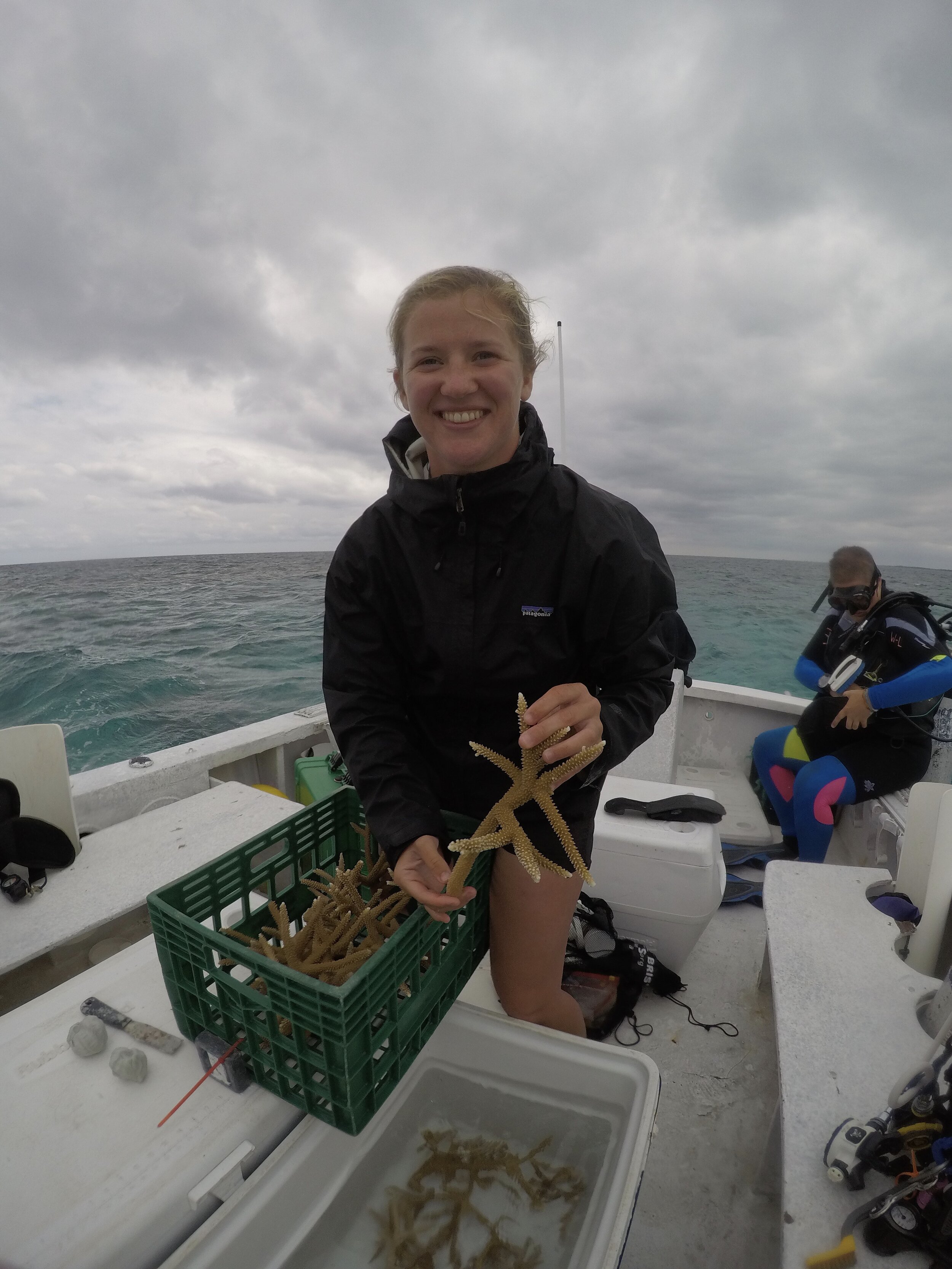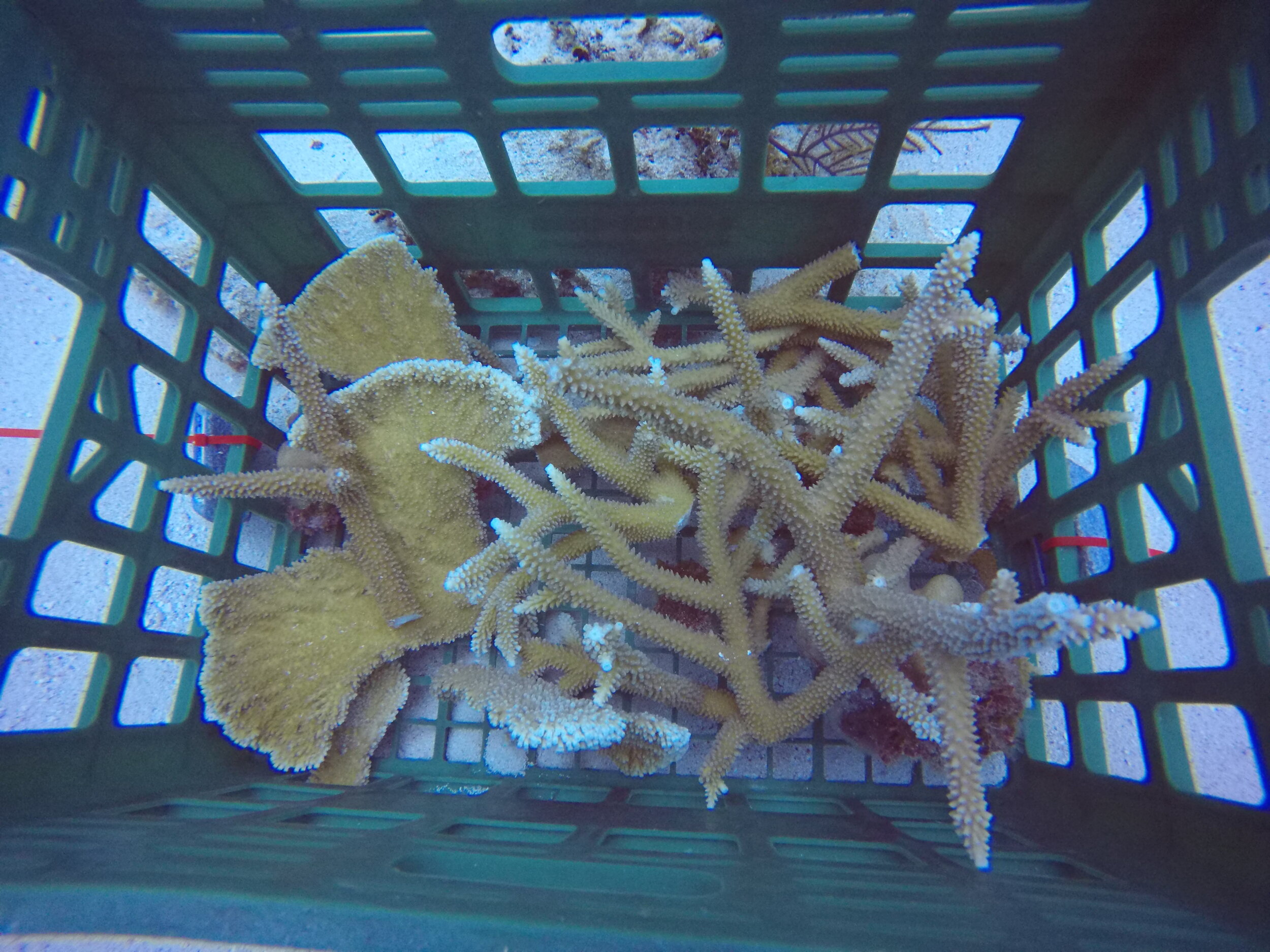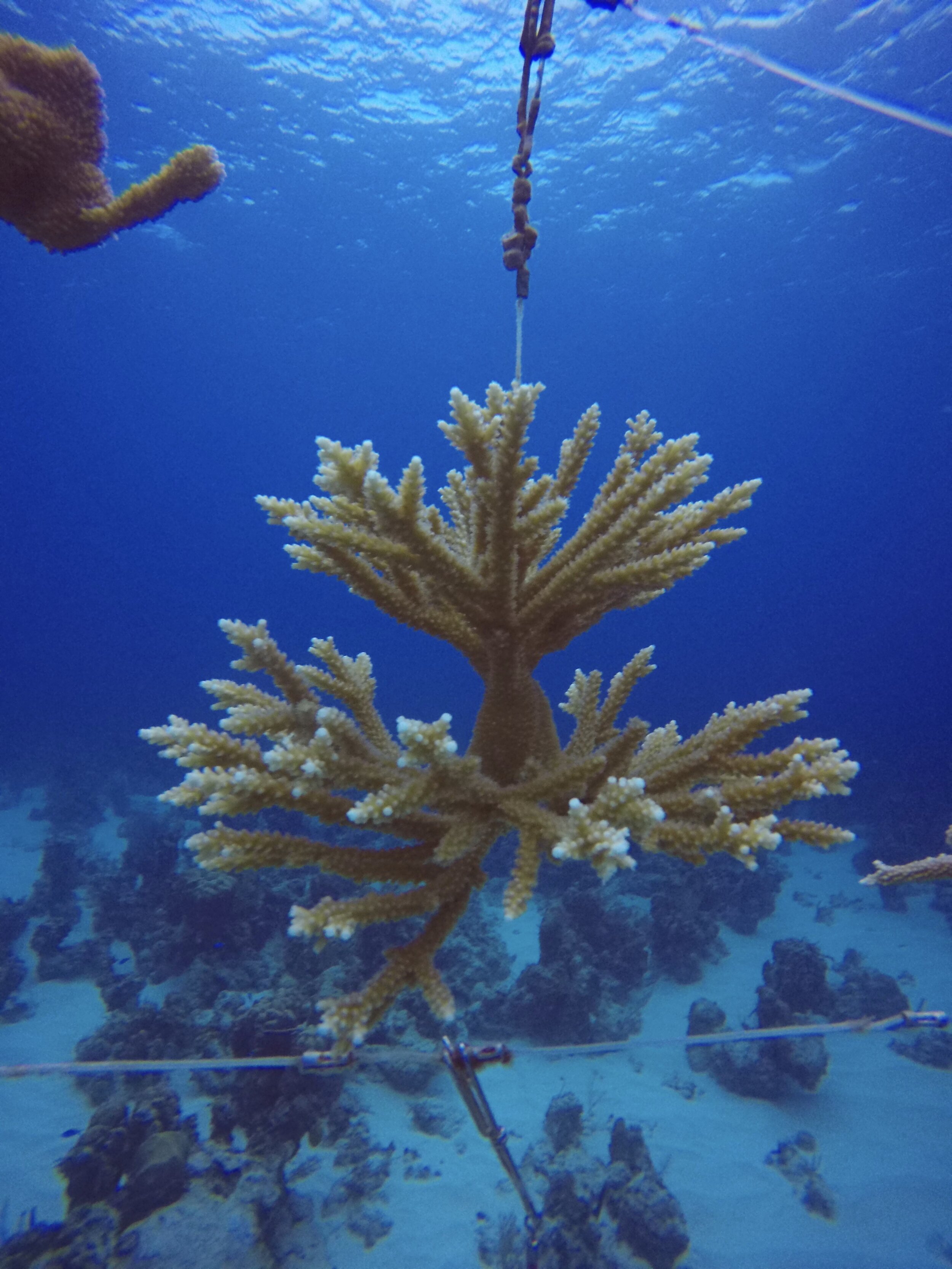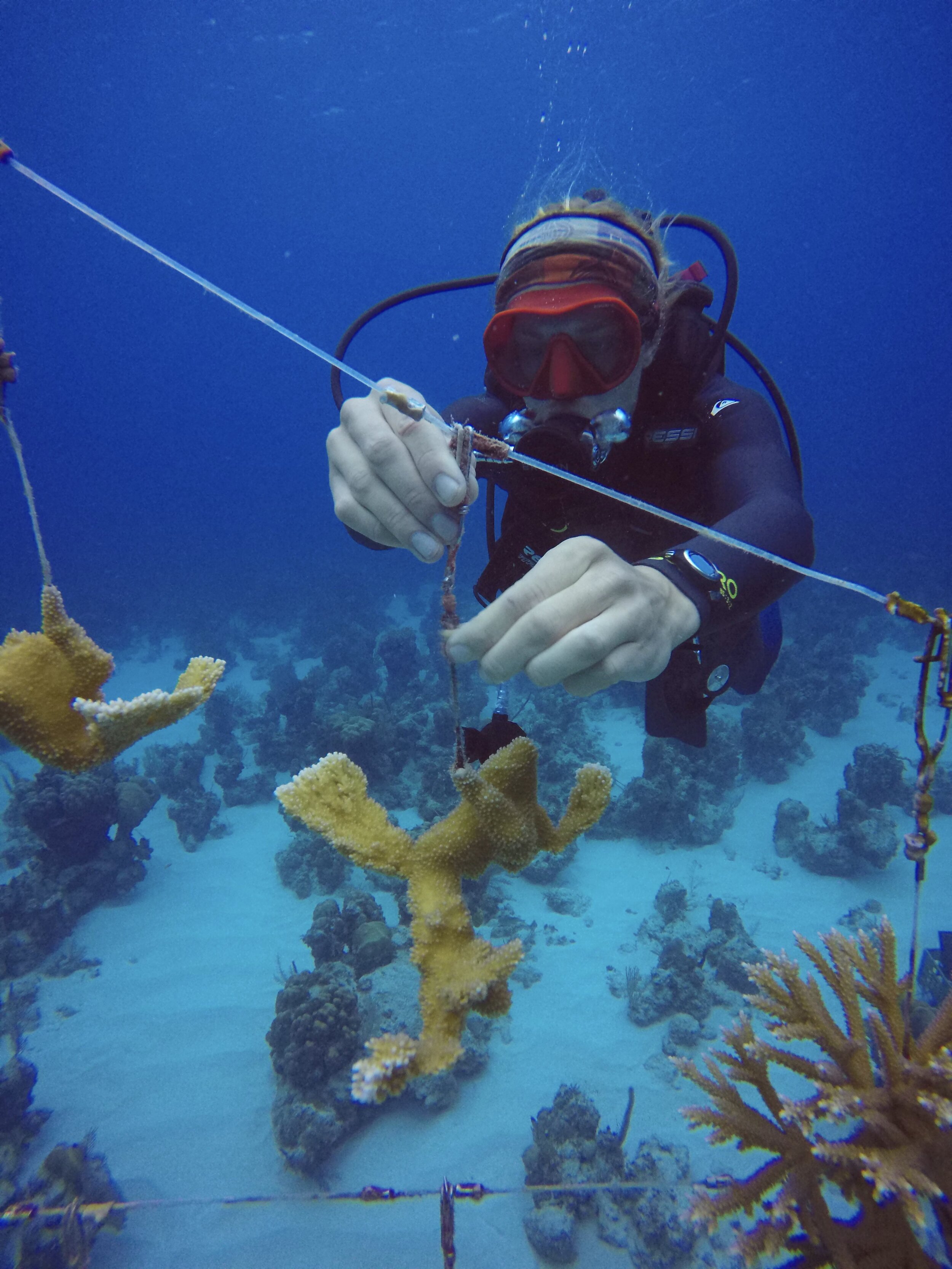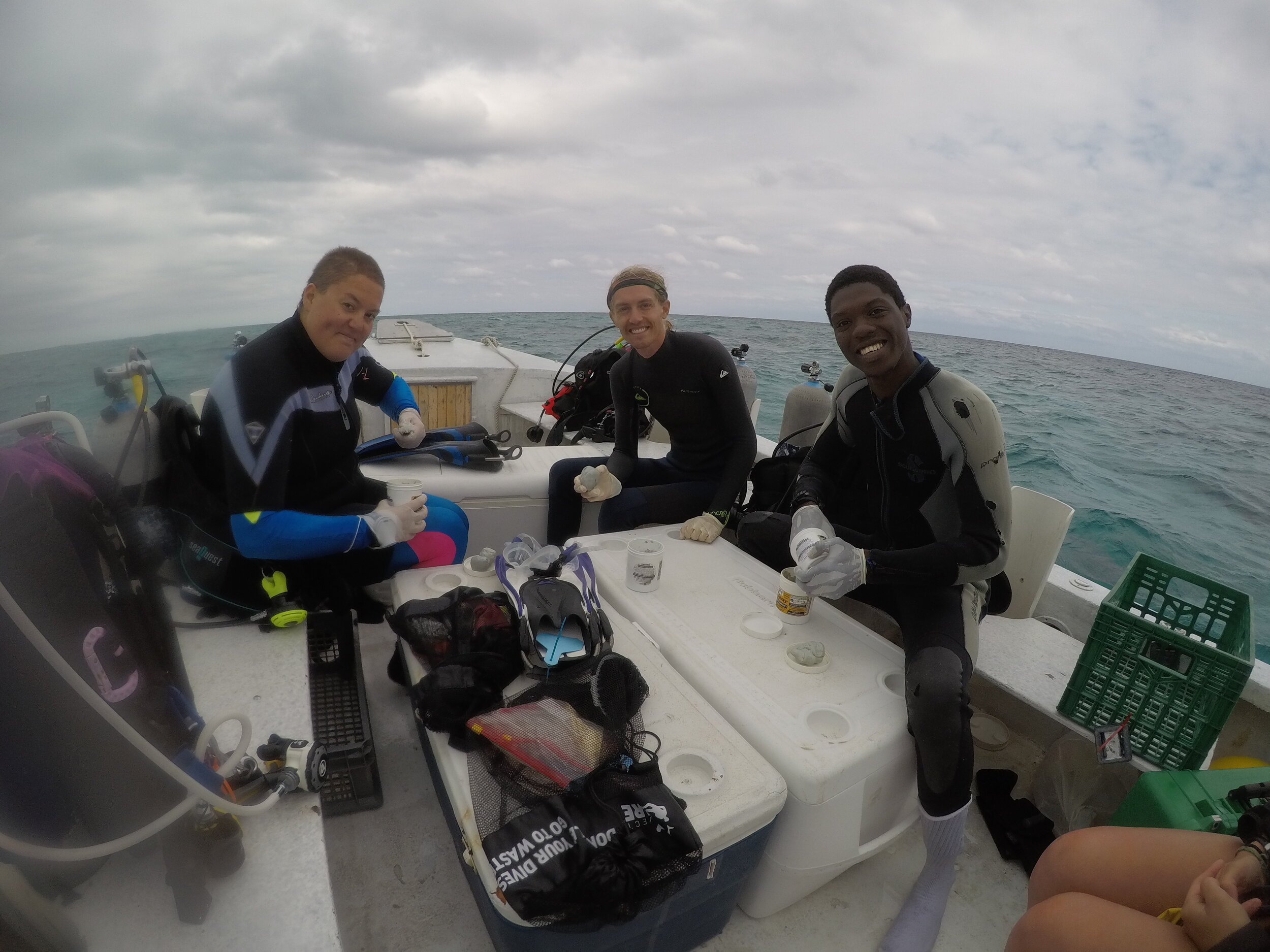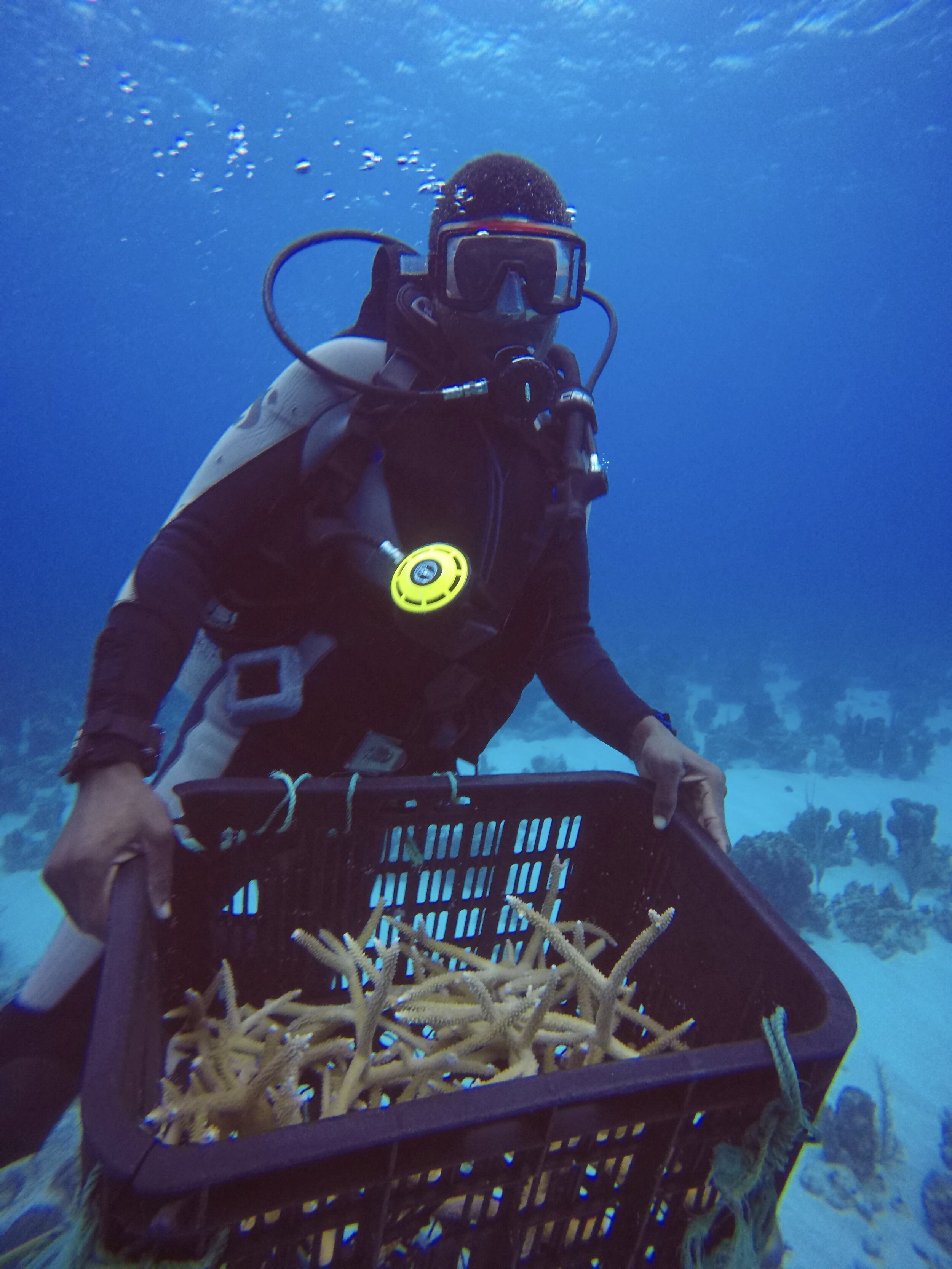Alumni Highlight: Shelby Brown, Student and Dive Instructor
/Shelby Brown, Former Student & Current Dive Instructor
When did you first visit Forfar?
I first visited Forfar as a student in 2014. I was originally pursuing a Wildlife Management degree but had a lot of friends in the Hocking College Ecotourism program. They were all talking about a field trip to the Bahamas which got me interested!
Are you still in touch with your friends from the trip?
I do still keep in touch with friends from the trip. We live further apart now so it’s harder to see everyone but I made close friends and still keep in contact with my original dive buddy, Todd.
What is the most memorable or favorite part of your time as a student at Forfar?
SCUBA diving was what really stuck with me! But there were lots of other amazing experiences too. I remember snorkeling an oceanic blue hole and the coral were all super healthy and there were huge fish swimming around me. We also had one moment where a shark swam right next to us and it was one of the most memorable parts of my trip.
Your experience at Forfar with Hocking College is the same curriculum we have implemented in our 6-week Forfar Marine Science Program. What would you say to students who may be interested in spending their gap year at Forfar?
Definitely do it! My life wouldn’t be the same if I hadn’t gone on this trip, I never would have learned to dive, or met Andy (my current boss) or fallen in love with the ocean. Just do it, I don’t think it’s possible to have a bad time on this trip, regardless of what you do later it will leave with a lot of lessons. Whether academic, cultural, or lessons about yourself. The disconnect and lack of technology meant we spent so much time together and had new experiences. I learned to find joy in simple activities like playing basketball and just talking with other people. It’s a phenomenal place and it’s impossible not to enjoy yourself there.
How did the Forfar program benefit you in your current job?
I wouldn’t have my current job, as the store manager at Columbus SCUBA, if I hadn’t gone to Forfar. The program introduced me to so many different career paths that I hadn’t previously considered. My experience gave me the initial certifications to get started in the scuba diving field. When I latched onto diving, it just exploded from there. Learning to dive at Forfar is probably what allowed me to fall in love with diving. If I learned to dive back in Ohio in cold, muddy quarries I don’t know if it would have had the same impact.
I finished the program at Forfar with my PADI Open Water and PADI Advanced Open Water certifications. Then I immediately signed up for my Rescue course and bought my own gear. I was working on my Divemaster course when I was offered a full time job at Columbus SCUBA. I felt incredibly lucky to be offered this job, before I had even completed my Divemaster training. I gained my Dive Instructor certification in December 2015 and since then I have progressed in the field becoming a PADI Master Scuba Diver Trainer.
What are your responsibilities in your current role?
In my current role I get to do a lot of SCUBA courses in the swimming pool in the winter and in local quarries in the summer. We dive locally almost every weekend and there are lots of opportunity for travel. I’ve taught in Bonaire, Little Cayman, Florida, and The Bahamas. It’s not all diving though, I do a lot of administration work too. I make sure that everything in the store is running smoothly by managing the crew at the store, maintaining equipment, cleaning, working directly with customers and scheduling SCUBA classes. For me, having a good work family makes it all an enjoyable experience and I think I have the best work family!
What was it like returning to Forfar as a dive instructor for the program you graduated from?
It’s an amazing, super nostalgic experience for me, it’s like everything has come full circle. I can see myself in the students because I was in their position once. I understand the anticipation, the nervousness, and the excitement they are feeling because I felt that, too. I think the students trust me more because they know that I’ve been through the experience before. Getting to go back and teach at Forfar is one of my absolute favorite parts of my job, every time I go back I form a deeper relationship with Forfar.
Did you connect with any local staff during your visits as a student or dive instructor?
Yes for sure, I really connected with Daddy Cool on my original trip to Forfar and every time I return, we have deeper conversations, I love hearing about his life and his family. Same with the breakfast cooks, Doramae and Catherine. I remember being intimidated when I first met them but now every time I return, they always come and say hello and we have great conversations catching up. I love to talk with Cardo and Randal to hear about what has changed and see the different phases of Forfar. I have definitely developed a relationship with all of the local staff and enjoy being able to experience Bahamian culture directly by hearing about the lives and stories of local people on Andros.
Where is your favorite dive site and why?
On Andros, it has to be Amphitheater. It feels like you’re in a coral stadium with the swim throughs and the corals built up on either side of you. There’s one portion that looks like a big sand road and leads down deeper into the Tongue of the Ocean which is so cool. I’ve seen some really amazing wildlife there like big barracudas and reef sharks.
What would you say to someone who is interested in scuba diving but anxious to try it for the first time?
I would say just try it! The more time you spend in the water the more comfortable you will become, nobody is an expert the first time they try something. All dive instructors were once Open Water students so no one is judging you! If people are worried about safety, yes diving has inherent risks but they are easily avoided and that’s all part of your initial training. Stay within the limits of your training, build your experience slowly, and you can minimize most risks. It’s not as scary as it sounds!
Did you know Ben Bohl? Any memories you want to share about Ben?
I first met Ben on my pre-trip meeting at Hocking College before I visited Forfar. I met him again once I started working at Columbus SCUBA and we shared office space, he was always super kind to me. From everything I’ve seen at IFS, I can tell that he really cared about educating students and cared deeply about Andros.
What does Forfar mean to you?
Forfar means a lot to me, it’s the place I figured out what I wanted to do with my life and my career. It’s a place you can go and disconnect from the more superficial and frivolous things in life and just really be in the moment, get back to basics, and connect to nature.
Is there anything else you want to add or would want our (blog) readers to know?
I would want them to know that Forfar is amazing but you need to be willing to go with the flow, it will teach you to be flexible, and roll with the punches! It’s a valuable life lesson to learn that plans can change moment to moment and how best you can adapt to those changes. Forfar is awesome and you should go! It’s rustic but that’s part of what I love about it, it makes it an adventure and is part of the fun.
